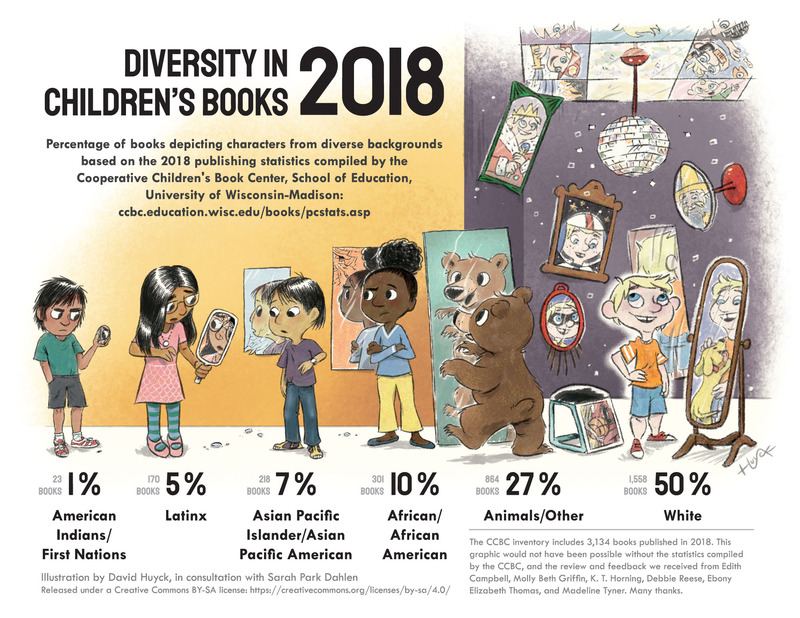How tags were chosen
Categories for Character type, Race/ethnicity, Gender, Sexuality, and Disability are based on the broad categories employed by the Children’s Cooperative Book Centre in the School of Education at the University of Wisconsin-Madison.The CCBC has been compiling statistics on racial diversity in the children’s books they receive for many years; Sarah Park Dahlen and David Huyck produced an infographic based on the CCBC’s findings in 2015 and again in 2018 (the 2018 infographic is below).
(Our sincere thanks to Madeline Tyner of the CCBC for her generous help and support along the way.)
Since 2018, the CCBC has also been compiling statistics on other types of diversity, including sexuality, disability, and religion.
Given the CCBC’s depth of experience and knowledge of the field and the fact that, to the best of our knowledge, there is no entity in Canada doing this same work, it seemed logical to follow their categories wherever possible, making some minor changes to reflect Canadian identity and the nature of this project.
Over the course of the winter 2022 project, however, the terminology we used for gender evolved. Initially, we adopted the CCBC terms "male" and "female" (in addition to "non-binary," "transgender," and "unspecified"). Discussions in the classroom and then with experts in the field of Gender Studies led us to recognize that these terms describe biological sex rather than socially constructed gender. Although "male" and "female" were chosen by the CCBC because children's books include non-human and child characters that cannot easily be described using the gender-descriptive terms "men" or "women," we decided as a class that we would adopt "girl/woman" and "boy/man" for characters and "woman" and "man" for creators in place of "male" and "female." Cataloguing vocabulary was revised to reflect the change.
Because this decision was made in the final stages of the winter 2022 project (during a "works in progress" session), some student exhibits from that class may still use the terms "male" and "female" in their discussions of gender diversity in their displays.

